Sound design and foley are crucial elements that elevate the storytelling experience, adding depth and realism to every scene. Foley, the art of creating everyday sound effects like footsteps, rustling clothes, or the clink of a glass, helps bring a film’s world to life, making it feel authentic and immersive. In The Shakedown, Sound Designer Denys Marcel takes us behind the scenes to explore the creative process that shapes the film’s distinctive audio.
From crafting the hilariously lifelike sounds of Antonio, the silicone sex doll, to transforming empty hot water bottles into unexpected stars, let’s dive into how we brought these sounds to life.
What was the most challenging sound effect you had to create for The Shakedown?
The toughest sound to nail was definitely Antonio, the silicone sex doll – bringing him to life was a unique challenge to say the least! Sound design is all about making the unbelievable believable, and in this case, we needed a sound that was both comedic and oddly convincing. We experimented with everything from motorbike tyres to a toy T-Rex, but the winning sound, funny enough, came from a pair of empty hot water bottles. After countless different approaches of squeezing, dropping, twisting and knocking them about, we finally captured the perfect blend of slapstick comedy that brought Antonio to life. It’s moments like these that highlight the magic of sound design. Taking the strange and mundane and making it feel real, amplifying the story in ways you’d never expect with items you’d never assume.
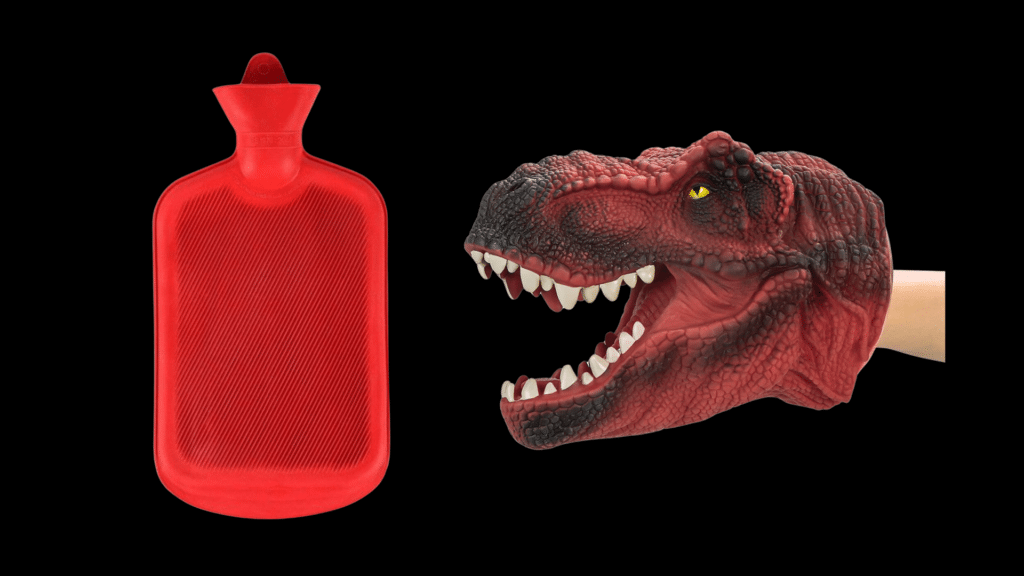
Were there any unexpected objects or materials you used?
One of the most unexpected objects we used was an old chair in the office that we dismantled to capture the perfect creaking sounds (Sorry, James). The sound of the rusty springs added just the right touch of humour we needed for a rather cheeky scene in the film. Foley is all about finding the right sound to enhance the story, and sometimes manipulating common props can make a huge impact in elevating the comedic factor.
What was your favourite sound effect to create?
The ice bath scene was a standout for me. Using real ice, Kyle submerged his hands in freezing water for 15 minutes, showcasing true dedication to the craft of foley. We recorded the ice clinking in a towel-lined bucket to minimise noise. Through layering, pitching, and editing, we crafted a realistic, immersive sound that made you feel like your head was in the ice bath and that’s exactly what we wanted. Capturing sounds that would send shivers down your spine.
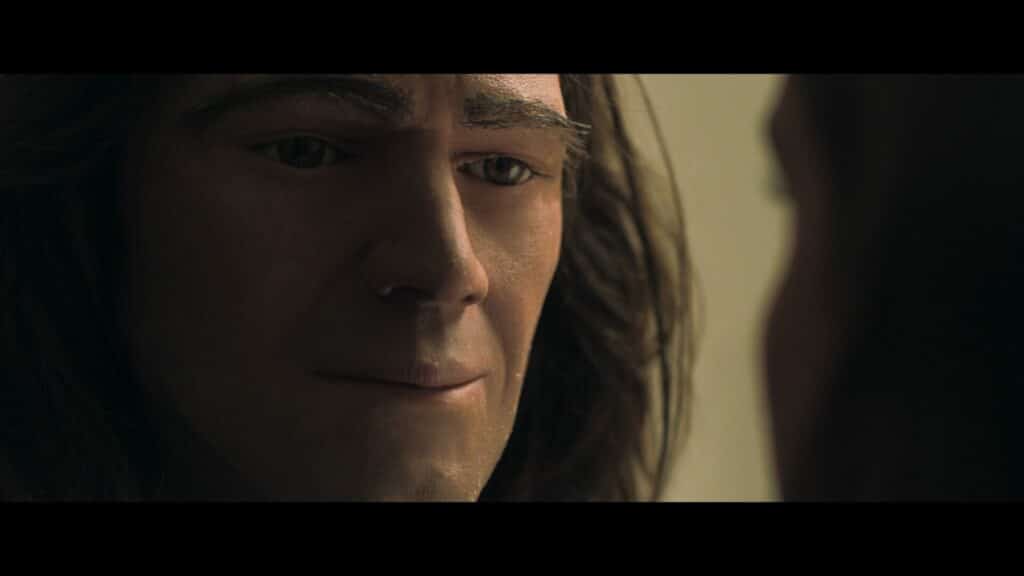
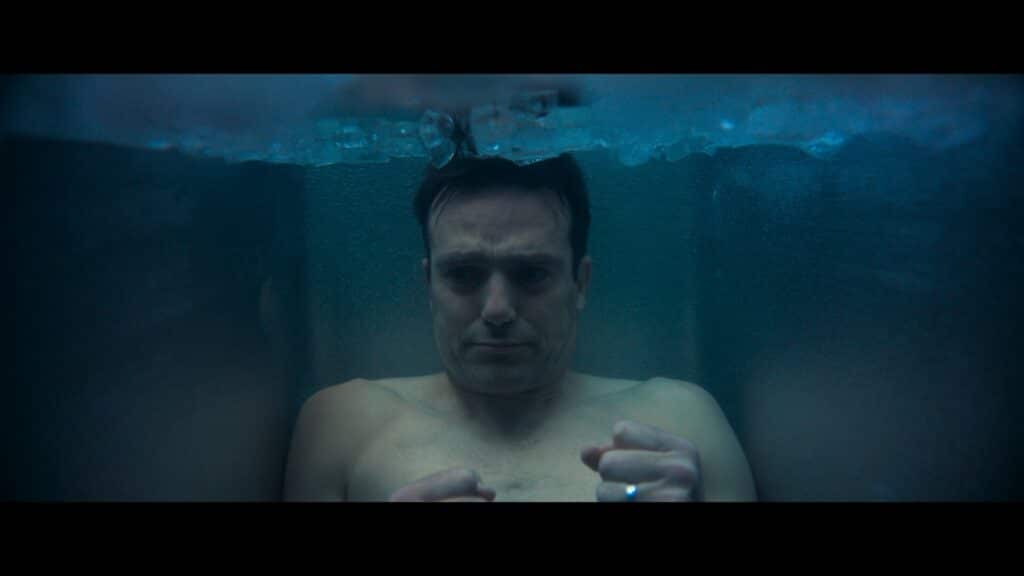
Can you walk us through recreating a key action scene?
The intense house fight with Henko was a thrill to recreate. We kept sounds grounded and real, using distant mics to capture the environment’s clatters and crashes, making the scene feel as authentic as possible. Gunshots varied based on character locations, like distant echoes when Natalie calls the cops. For Mikey’s fight with the MMA fighter, I tossed clothes, bags, and random items around the foley room to heighten the messy atmosphere.
How do you decide which sounds to enhance or exaggerate to heighten the drama of a scene?
Deciding which sounds to enhance was about capturing each scene’s emotional core and reflecting that through the characters. The big bad guy’s gunshots were louder and more menacing, while others were subtler, focusing on mood and playing with sound to enhance the comedy. We used sound to tell its own story – like dropping into silence when Justin throws a cooking pot in the final fight, amplifying the chaos. Sound evolved with the characters, growing louder or quieter as tension built, creatively heightening the drama and bringing the scenes to life.
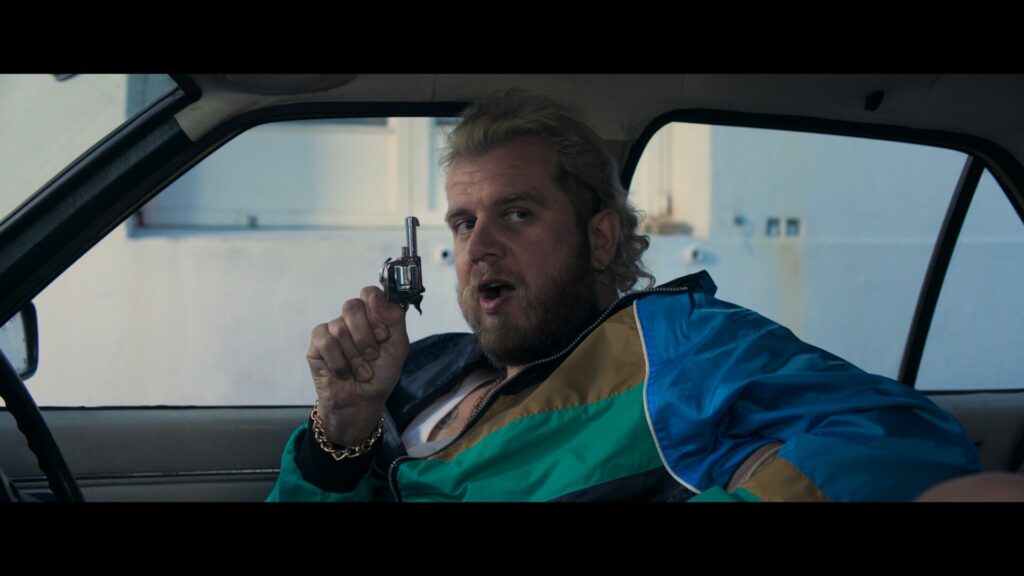
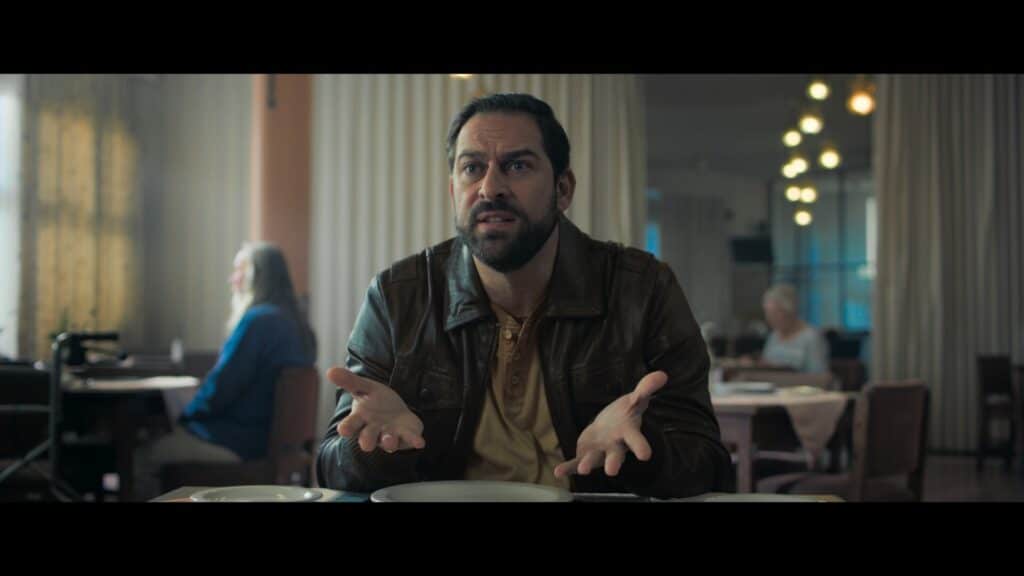
Did any characters have specific sound “personalities”?
Dovi’s creaky leather jacket perfectly captured his shifty, untrustworthy vibe, adding a layer of tension to every move he made. Meanwhile, the villain’s heavy, deliberate footsteps underscored their intimidating presence, making them feel more imposing without even dialogue. These subtle sound choices gave each character their own unique audio identity, adding depth and enhancing their presence on screen.
Was there a scene that required more sound design work than usual?
The horse race scene needed extra work since the horses aren’t visible on screen, so sound was obviously a key player. I first tried a dramatic Hollywood-style approach with thundering hooves, but it felt too intense. After watching real races on YouTube, I went for a natural sound that matched the characters’ perspective. This subtle approach conveyed the action without overpowering the dialogue and music, making the scene immersive and believable. Balancing it was challenging but rewarding.
Were there any sounds that had to be changed completely?
I always try to sneak in a hadeda bird call in every film, but Kyle caught on and muted it. The hadeda didn’t quite fit this time, but it will be back with vengeance!
Foley work can often involve a bit of improvisation. Was there a moment during the production of The Shakedown where you had to get particularly creative or resourceful?
Creating the sound for Antonio was one of our most resourceful moments. We used everything from leather jackets and squeaky toy T-Rex heads to empty hot water bottles and bike tyres, layering them to capture the right creaks and wobbles. It was a serious game of trial and error, testing props and discarding what didn’t work. I’d often provide multiple sound options, and we’d choose the best fit for Antonio’s character. It took a lot of effort for just a few seconds of sound, but the result was spot on, making it all worthwhile.
Who knew making movie sounds could be such a wild ride? From hot water bottles and squeaky toy dinosaurs to a foley room turned chaotic battlefield, The Shakedown is proof that sound design is as much about creativity as it is about improvisation. We hope you enjoyed this peek into the madness behind the scenes – where every clatter, creak, and wobble brings the film’s crazy world to life. Next time you watch, remember: behind every sound is a story, a little improvisation, and a lot of unexpected fun.
We have some flippen exciting foley news:
We’re stoked to announce the expansion of Pressure Cooker Studios! We’re elevating our world-class facilities with a brand-new space on the 6th floor of Thibault House. This impressive addition will feature an additional state-of-the-art Dolby Atmos Cinema, expanded editing suites, and a cutting-edge foley stage designed by Martin Pilchner of Pilchner-Schoustal, a renowned Canadian studio architect specialising in acoustic consultancy.
Our new foley stage will be equipped with purpose-built foley pits, extensive storage, a range of metal and wooden staircases, prop doors, ceramic and metal sinks, and more. This innovative space will take our foley production to new heights and will be the first of its kind in South Africa.
With this expansion, we’re transforming our studios into a vibrant, all-encompassing hub of creativity, ready to support your audio projects like never before. Stay tuned for more updates as we continue to grow!
Here’s what a few of our team members have to say about the new foley stage:
“Feeling super duper stoked about this! The new designated Foley stage will open up a world of possibilities. Bigger props, more space, and dedicated foley pits will help us achieve our desired sounds more efficiently.” – Denys Marcel
“Having our own dedicated foley stage will allow us to start collecting unique props and elevate our narrative projects.” – Kyle Koekemoer
“The new foley stage will dramatically improve our capacity to create comprehensive foley layers. It allows us to deliver higher quality results in less time and approach sound design in a more organic and creative way.” – Alec Mackay